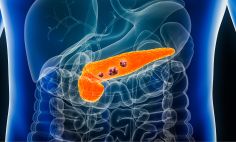Staying healthy includes exercising, eating nutritious food, getting enough sleep, and caring for your overall well-being. Understanding these terms can help you make the most of your exercise routine and eat a healthy and balanced diet. Always consult your doctor before beginning any exercise program.
Physical activity terms
Physical activity is any body movement that works your muscles and takes more energy than resting. Walking, running, dancing, swimming, yoga, and gardening are a few examples of physical activity.
- Aerobic exercise is activity that requires moving your large muscles such as, those in your arms and legs. It makes you breathe harder and makes your heart beat faster than usual. Over time, regular aerobic activity makes your heart and lungs stronger. Running, swimming, walking, and biking are a few examples of aerobic exercise.
- Flexibility training is exercise that stretches and lengthens your muscles. It can improve your joints and muscle flexibility, which can help prevent injuries. Some examples are yoga, tai chi, and Pilates.
- Resistance/strength training is exercise that firms and tones your muscles. It can improve your bone strength, balance, and coordination. Some examples are push-ups, lunges, and bicep curls.
- Warm-ups are exercises or movements that get your body and muscles ready to be physically active―for example, walking or jogging for 5 to 10 minutes before a run.
- Cool-downs are light activities that help your body relax and recover after you’ve been physically active―for example, slowing down gradually at the end of a workout or switching to a less-intense activity for a few minutes.
Heart rate (or pulse) is the number of times your heart beats in a certain amount of time—usually a minute. The typical resting heart rate for an adult is 60 to 100 beats per minute.
- Maximum heart rate is the fastest your heart can healthily beat based on your age.
- Target heart rate is how fast your heart should beat when you exercise based on your age. Your target heart rate should be about 50–75% of your maximum heart rate.
Perspiration (sweat) is a clear, salty liquid produced by glands in your skin. Sweat evaporates when it hits the air, which cools your body down.
Nutrition terms
Food and drinks provide the energy and nutrients you need to be healthy. Nutrients include proteins, carbohydrates, fats, vitamins, minerals, and water.
Basal metabolic rate is the number of calories your body needs to maintain basic functions such as breathing, heart rate, and digestion.
Body mass index (BMI) is an estimate of your body fat percentage based on your height and weight. BMI is a tool for screening for weight categories that are associated with health concerns such as heart disease.
Blood glucose is the main sugar found in your blood. It is a source of energy for your body, including your cells, tissues, and organs. During the digestion process, carbohydrates break down, releasing glucose. A hormone called insulin regulates glucose and moves it through the body.
Calories are a unit of energy in food. Calories come from carbohydrates, fats, protein, and alcohol in food and drinks.
Carbohydrates are sugar molecules and one of the main types of nutrients in food and drinks. Your body breaks carbohydrates down into glucose.
- Dietary fiber is a type of complex carbohydrate that’s important for gut health. Fiber is found in plants like fruits, vegetables, and whole grains. Fiber makes you feel full faster and for a longer time. It also helps to lower cholesterol levels and can prevent constipation.
- Sugar is a type of simple carbohydrate that tastes sweet. Your digestive system breaks down sugar into glucose, and your cells use the glucose for energy. Sugars can be found naturally in fruits, vegetables, milk, and milk products. They are also added to many foods and drinks during preparation or processing. Foods with added sugars have lots of calories but few nutrients, so aim to only eat these foods in moderation.
Cholesterol is a waxy, fat-like substance that’s found in all the cells in your body. Your body needs the right amounts of cholesterol to stay healthy. Your body makes all the cholesterol it needs, but there’s also cholesterol in foods that come from animals. High levels of cholesterol in the blood can increase your risk of heart disease.
- HDL stands for high-density lipoproteins. It is also known as “good” cholesterol. HDL carries cholesterol from other parts of your body to your liver, where it can be flushed out of your body. Foods that contain healthy fats, such as fish oils, avocados, and nuts, can increase HDL cholesterol.
- LDL stands for low-density lipoproteins. It is also known as “bad” cholesterol. Too much LDL causes plaque (fatty deposits) to build up in your blood vessels, which can cause health problems. Foods that contain trans fats, saturated fats, and cholesterol can increase LDL.
Dietary fats are a type of nutrient. You need a certain amount of fat in your diet—but not too much—to stay healthy. Fats give you energy, insulate your body to help keep you warm, and help your body absorb vitamins. Fat stored in the body can also be used for energy. Dietary fat also plays a major role in your cholesterol levels. Not all fats are the same, but they all have the same number of calories per serving.
- Saturated fat is a type of dietary fat that is found in animal products and some oils, including dairy products (like butter, cheese, and cream), coconut and palm oils, and some meats. Saturated fatty acids can raise blood cholesterol and the risk of heart disease.
- Monounsaturated fat is a type of healthy dietary fat that is found in avocados, canola oil, nuts, olives and olive oil, and seeds. Replacing saturated fats with monounsaturated fats may help lower cholesterol and reduce the risk of heart disease.
- Polyunsaturated fat is a type of healthy dietary fat that is found in plant and animal foods such as salmon, vegetable oils, and some nuts and seeds. You need polyunsaturated fatty acids for proper brain function and cell growth, but since our bodies don’t make them, you need to get them from other sources.
- Trans fat is a type of dietary fat that is created when liquid oils like shortening are changed into solid fat. It may be found in crackers, cookies, and snack foods. Trans fat raises your LDL (bad) cholesterol and lowers your HDL (good) cholesterol.
Digestion is the process your body uses to break down food into nutrients. Your body uses these nutrients for energy, growth, and cell repair.
Electrolytes are minerals in your body―like sodium, magnesium, and chloride―that you get from the food you eat and the fluids you drink. When you are dehydrated, your body does not have enough fluid, nor does it have enough electrolytes.
- Sodium is a mineral that helps your nerves and muscles function properly and keeps the right balance of fluids in your body. Table salt is a sodium compound made up of the minerals sodium and chloride. Diets high in sodium can raise your blood pressure.
Energy balance is the balance between the calories you get from eating and drinking (energy you take in) and the calories you use up through activity, growth, and daily living (energy you burn).
Glycemic index is a measure of how a carbohydrate-containing food raises your blood sugar.
Metabolism is the process that your body uses to get or make energy from the food you eat.
Protein is in every living cell in the body. Your body needs it to build and maintain bones, muscles, organs, skin, blood, and immune cells. Your body doesn't store protein, so you need to get it from the foods you eat, like meat, dairy products, nuts, and certain grains and beans.
- Amino acids are the molecules that make up protein. Some amino acids are made by the body, and others come from food. It’s important to get a balance of amino acids every day.
Triglycerides are a type of fat found in your blood. Your body makes triglycerides or gets them from the foods you eat and from broken-down stored body fat. High levels of triglycerides may increase your risk of heart disease and stroke.
Water intake is the amount of water we all need to drink. How much you need depends on your body type, your activity level, and the weather where you live. Your intake includes fluids that you drink and fluids that you get from food.







